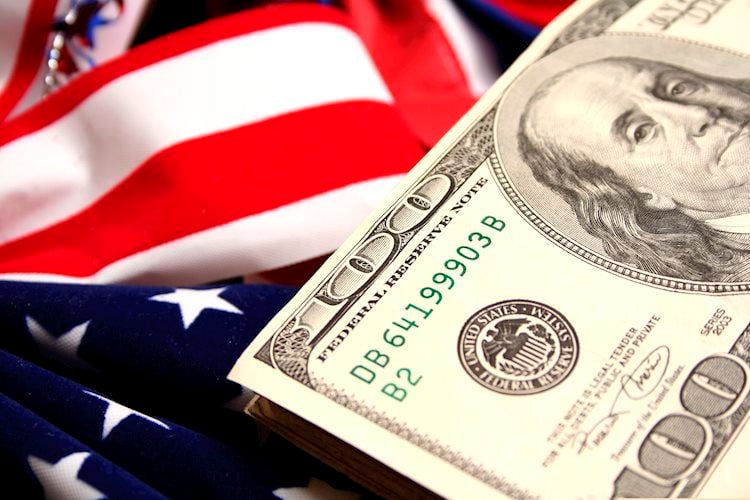- The Greenback trades steady on Friday as markets reopen after Thanksgiving.
- US Traders brace for import US PMI data.
- The US Dollar Index still resides below 104 and is at an important crossroad from a technical perspective.
The US Dollar (USD) is starting to come alive a bit as markets are digesting the turkey from Thanksgiving. One element to point out though is that US yields are soaring while bond prices are falling with the benchmark US 10-year note jumping from 4.40% on Wednesday’s close to 4.4% on the opening price this Friday. While Black Friday is underway, traders will be on the lookout for some important US data right at the end of this week that could make or break the US Dollar Index’s (DXY) position.
This Friday will all be about the Purchasing Managers Index preliminary reading for November. The importance is even more heightened as on Thursday, the European sub-50 PMI’s were soaring for several core EU countries. Should US PMI numbers this afternoon contract, and fall below 50, it would mean that Europe is in a better condition for recovery than the US, which means a substantial break for the Greenback.
Daily digest: Opening bell and PMI next
- Near 14:45 GMT the S&P Purchase Managers Index numbers will be released for November:
- Manufacturing is expected to head from 50 to 49.8.
- Services are expected to head from 50.6 to 50.4.
- The Composite Index was at 50.7 with no expectation foreseen.
- Headline risk is expected for next week with the United Nations’ COP28 meeting to start in Dubai on Thursday. At that same time OPEC+ will have its delayed meeting to address production cuts to uphold current price levels in Oil.
- Equities are very mixed this last day of the trading week: Japanese indices have closed up 0.50% for this Friday. China, on the contrary, is down with the Hang Seng as biggest loser, near 2%. European equities are still looking for direction halfway through the European session, US equity futures are flat.
- The CME Group’s FedWatch Tool shows that markets are pricing in a 99.5% chance that the Federal Reserve will keep interest rates unchanged at its meeting in December.
- The benchmark 10-year US Treasury Note yield halted trading at 4.48% and will not move this Thursday with markets closed.
US Dollar Index technical analysis: DXY linked with bond yields
The US Dollar is on the verge of flipping a coin on what it will do next from a technical point of view. Looking at both a daily and weekly chart, the DXY is trading at very crucial supportive levels that, once snapped, offer ample room for more downturn. This means a substantially weaker US Dollar in several currency pairs. All eyes on the PMI data this afternoon if it can support the DXY or continue its decline.
The DXY is right at the 200-day SMA near 103.62, and will need to have a daily close above it in order to reassure that the same 200-day SMA is valid as support. Look for a further recovery bounce towards the 100-day SMA near 104.20 with preferably a break and close above. Should the DXY be able to close and open above it later this week, look for a return to the 55-day SMA near 105.71 with 105.12 ahead of it as resistance into next week.
The 200-day SMA will try to play its role again as a crucial pivotal supportive level against any downturn. Should the index snap this level again, the psychological 100.00 level comes into play. With a very slim economic calendar and US trading desks closed, there is room for a potential big downturn.
Interest rates FAQs
Interest rates are charged by financial institutions on loans to borrowers and are paid as interest to savers and depositors. They are influenced by base lending rates, which are set by central banks in response to changes in the economy. Central banks normally have a mandate to ensure price stability, which in most cases means targeting a core inflation rate of around 2%.
If inflation falls below target the central bank may cut base lending rates, with a view to stimulating lending and boosting the economy. If inflation rises substantially above 2% it normally results in the central bank raising base lending rates in an attempt to lower inflation.
Higher interest rates generally help strengthen a country’s currency as they make it a more attractive place for global investors to park their money.
Higher interest rates overall weigh on the price of Gold because they increase the opportunity cost of holding Gold instead of investing in an interest-bearing asset or placing cash in the bank.
If interest rates are high that usually pushes up the price of the US Dollar (USD), and since Gold is priced in Dollars, this has the effect of lowering the price of Gold.
The Fed funds rate is the overnight rate at which US banks lend to each other. It is the oft-quoted headline rate set by the Federal Reserve at its FOMC meetings. It is set as a range, for example 4.75%-5.00%, though the upper limit (in that case 5.00%) is the quoted figure.
Market expectations for future Fed funds rate are tracked by the CME FedWatch tool, which shapes how many financial markets behave in anticipation of future Federal Reserve monetary policy decisions.
